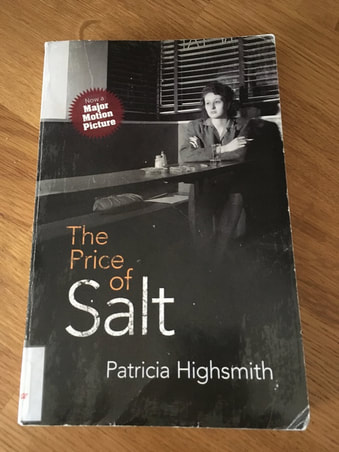|
http://www.jonimacfarlane.com/blog
In my part of the world the air outside reflects fine ice particles that glimmer in a soft quiet light. It's a season where everything seems to be holding its breath. And then I began to read a book that mirrored that soft, strange light through words on a page. Building it step by slow quiet step into the beautiful messy heartbreak of a love that tries, and fails, to break the characters. As if they were anything but extraordinary. The Price of Salt by Patricia Highsmith is filled with the steady realization that you are reading a beautifully sensitive treatment of the soul of the human heart. First published in 1952, readers may know it from the 2015 movie, Carol, starring Cate Blanchett and Rooney Mara. A chance encounter between a shopgirl working at a Manhattan department store and an older woman looking for a doll for her daughter, sets off a chain of events that alters both women’s lives. Therese Belivet is an aspiring set designer looking for work in New York while she works at Frankenberg’s during the Christmas season. Thankfully, this soul-crushing work is temporary. Her boyfriend, Richard, wants Therese to travel with him to Europe and eventually, to marry him. Therese doesn’t love him and offers no illusions to the contrary. She is a lonely, self-contained young woman who was cruelly tossed aside when her mother remarried. Carol Aird is a wealthy, glamorous older woman in the process of a divorce. She has a daughter, Rindy, who lives with her husband Harge when the novel opens. Details of custody and visitation have yet to be worked out, but acrimony is suggested. Carol invites Therese out for lunch and soon to her home in New Jersey. There is a quiet understated quality to their encounters, each woman holding back their emotions. No expression in words is offered. Instead, the reader is treated to a slow buildup through action: a gesture, a look, a smile. We are looking through a window, watching the light from a lamp in the dusk casting a glow across a face, two women driving a car, the smoke from their cigarettes trailing out the crack of the window. The rising tension is wonderfully caught in Highsmith’s understated language and the everyday details of scenes. Even when they begin their sexual relationship, there is a marvelous, refreshing restraint. The language is poetic and beautiful and joyous. Because it’s 1952 and because Carol’s husband wants to hurt her, he uses their daughter as a bargaining chip. Things turn ugly and Carol knows she must give up Therese to be able to see Rindy. Carol tries to do the right thing. Therese tries to do the right thing.” Highsmith, known as a suspense writer (Strangers on a Train, The Talented Mr. Ripley), originally published the novel under a pseudonym, although she acknowledged it was semi-autobiographical. She admitted she was pleased when the novel was praised by lesbian readers because it didn’t punish the characters for being gay and allowed them at least the possibility of a happily ever after. A sensitive treatment of fully realized characters who defy stereotypes. Society tries to break these women for their love. It fails. Somehow, it was the perfect book to match the soft falling snow, the quiet light, the way the world held still for a moment. If you’re read it, let me know your thoughts. And in the meantime, happy reading. Joni
2 Comments
Julie Pierron
1/17/2024 05:42:09 pm
Please send me your contact info. Having trouble sending you a message. Lots to catch up on and just wanted to connect. Thanks Joni. ove your Blog
Reply
Joni MacFarlane
1/18/2024 09:08:55 am
Hi Julie, so nice to hear from you. My contact info is:
Reply
Leave a Reply. |
Archives
July 2024
Categories |

 RSS Feed
RSS Feed
